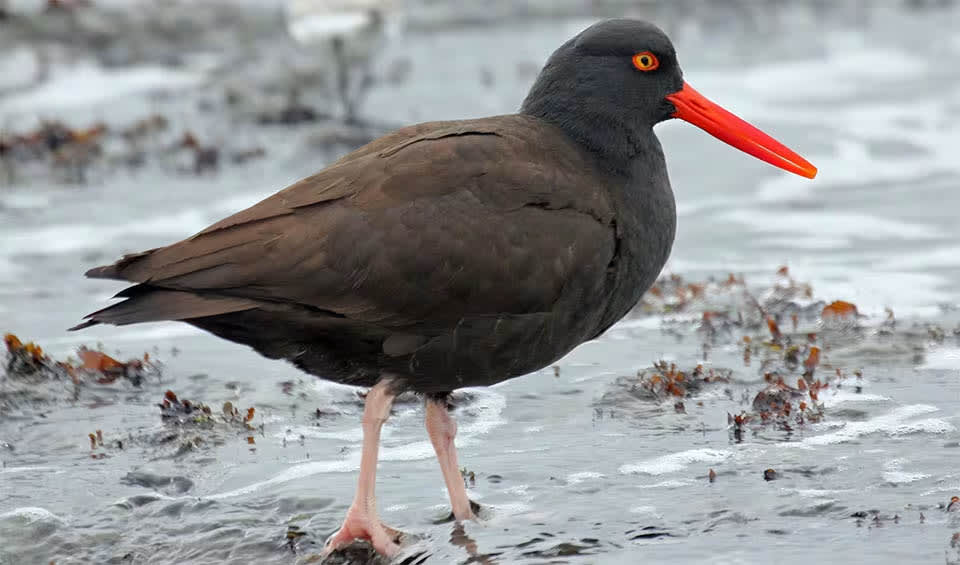The black oystercatcher, a striking bird with a distinct appearance and specialized habits, is a true spectacle along the rocky shorelines of the Pacific Coast of North America. This species stands out with its all-black plumage, which contrasts sharply against its bright orange-red bill and equally colorful eyes, creating a vivid display against the often gray and misty coastal backdrop where it resides.
A medium-sized bird, the black oystercatcher is primarily known for its strong, chisel-like bill, which it uses with precision to pry open shellfish, which is its primary food source. This diet includes mussels, limpets, and, as its name suggests, oysters, which the bird skillfully opens by severing the muscles that hold the shells together. Its feeding technique is a marvel of nature, showcasing an adaptation perfectly suited to its shoreline habitat.
One of the most interesting aspects of the black oystercatcher’s behavior is its breeding and nesting practices. Unlike many other birds, oystercatchers are monogamous, often forming long-term pair bonds. Their nests are simple scrapes in the ground, usually positioned in locations that afford some camouflage among rocks or vegetation but always close to the tide line. This proximity to water is crucial as it allows easy access to food resources. The female typically lays two to three eggs, and both parents share incubation duties, fiercely defending their nest against potential predators and intruders with loud, piercing calls and direct attacks if necessary.
The black oystercatcher is not a migratory bird, tending to stay within its breeding territory year-round. Its home range is typically a stretch of coastline that offers an abundance of food and suitable nesting sites. These birds are particularly sensitive to disturbances during the breeding season, and they rely on the undisturbed stretches of coastline to maintain their populations.
Distribution
 Argentina
Argentina Canada
Canada Falkland Islands
Falkland Islands Mexico
Mexico Peru
Peru United States
United States Uruguay
UruguayAnything we've missed?
Help us improve this page by suggesting edits. Glory never dies!
Suggest an editGet to know me
Terrestrial / Aquatic
Altricial / Precocial
Polygamous / Monogamous
Dimorphic (size) / Monomorphic
Active: Diurnal / Nocturnal
Social behavior: Solitary / Pack / Herd
Diet: Carnivore / Herbivore / Omnivore / Piscivorous / Insectivore
Migratory: Yes / No
Domesticated: Yes / No
Dangerous: Yes / No




